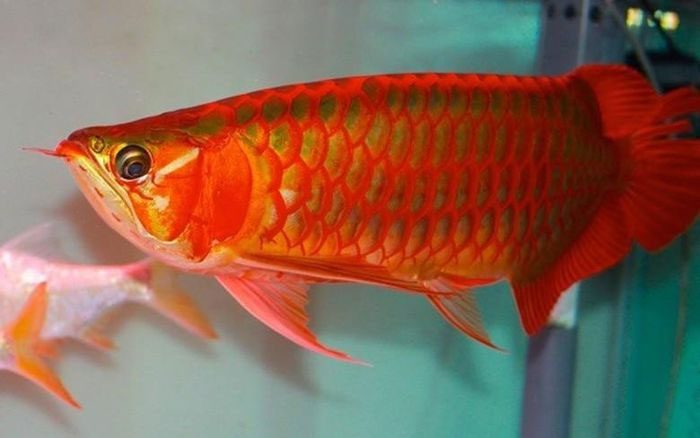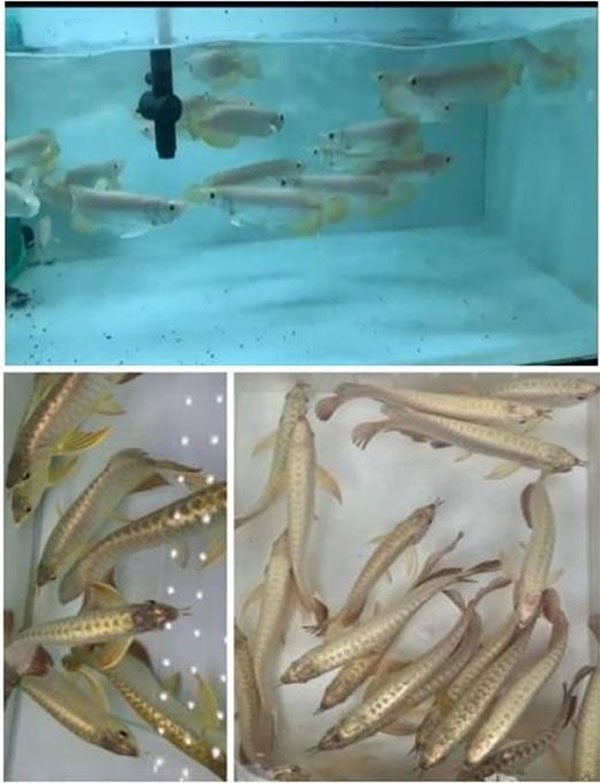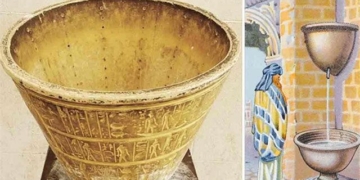The Ho Chi Minh City Department of Science and Technology has just completed the scientific and technological project “Developing a model for breeding dragon fish (Scleropages formosus) in the golden morph in Ho Chi Minh City.”
This model utilizes the technical advancements of Vietnamese scientists in the breeding of dragon fish, enhancing production efficiency while maintaining a supply of rare ornamental fish favored by the market.

The demand for dragon fish is increasing both globally and domestically.
Solving the Difficulties of Breeding Stock
The Ho Chi Minh City Department of Science and Technology has just completed the scientific and technological project “Developing a model for breeding dragon fish (Scleropages formosus) in the golden morph in Ho Chi Minh City.
According to Ms. Nguyen Thi Kim Lien (project leader) from the High-tech Agricultural Business Incubator Center in Ho Chi Minh City, there is a diverse range of ornamental fish production and business activities in the city, among which dragon fish is highly valued economically. Dragon fish symbolizes luck, prosperity, and happiness. Therefore, dragon fish are not only kept as decorative pets in homes but are also viewed as a feng shui symbol for homeowners.
The demand for dragon fish is increasing both globally and domestically. However, the breeding of this fish is still limited due to difficulties regarding parent fish sources, high costs, and a long maturation period that requires significant investment in both capital and adequate breeding facilities.
Particularly during the breeding phase, after fertilization, the male fish holds all the eggs in its mouth for approximately 50 – 60 days. Throughout this period, the male fish hardly eats, focusing solely on incubating the eggs and protecting the fry, which extends the breeding cycle.
The process of breeding dragon fish mainly relies on experience, lacking a stable procedure, with low egg incubation rates and fry survival rates, and the fish often suffer from diseases during rearing. Ms. Nguyen Thi Kim Lien stated: “The research team focused on establishing methods for incubating golden morph dragon fish eggs to increase the hatching and survival rates of fry from the yolk sac absorption stage to three months old by 15 – 20% compared to the old methods currently used by households (50 – 60% hatching and survival rates).”
The team has raised parent fish in a recirculating water system and transferred the method of artificial incubation for golden morph dragon fish. Factors affecting the survival rate and morphology of fish during artificial incubation include: water flow, water temperature, incubation density, and the time of egg collection post-fertilization. The eggs are incubated in a round glass tank with a volume of 10 liters of water, placed within a larger tank.
With the completed content and the transfer of the fry rearing process from the yolk sac absorption stage to three months old, the team has implemented the technical process for treating water sources in the rearing of golden morph dragon fish, along with transferring the fry rearing process from yolk sac absorption to three months old fish.
The technique for introducing fry into the rearing tank includes using artificially bred fish, with fry that have absorbed all their yolk sac and are approximately 8 – 10 cm long, selecting uniform, healthy fish with intact fins, responsive behavior, and characteristic colors. Young fish are raised at a density of 20 fish per tank, sized 1.0 x 0.5 x 0.5 m.

Dragon fish are highly favored ornamental fish with a high market value.
Stable Breeding with Beautiful Colors
According to the research team, the fry rearing tank must ensure conditions such as: water depth of 30 – 40 cm; a spacious tank for fish to swim, located indoors and continuously supplied with oxygen.
The glass tank is placed on a metal frame of 2 – 3 tiers for easy daily care and monitoring of the fish. Regarding the technique for enhancing the color of golden morph dragon fish to a yellow hue, when the fish reach 15 – 16 cm in size, color enhancement is achieved using lighting techniques (using white LED lights and raising the fish in a white composite tank).
After one year of implementing the project, the research team has transferred to Mr. Nguyen Xuan Khoa (Phu My Ward, District 7, Ho Chi Minh City) an improved production and rearing process for golden morph dragon fish that has shown technical efficiency (increasing survival rates and hatching rates by 20%) and financial effectiveness (increasing the proportion of dragon fish with the golden morph by 20%).
Technical parameters recorded in the process: The pairing rate for breeding fish is 73.33%, with an average of 28 eggs collected per male fish, the time taken to retrieve eggs from the male dragon fish’s mouth is 10 days, the hatching rate to fry fully absorbing their yolk sac is 80%, the survival rate of three-month-old fish is 80%, and the rate of achieving the golden morph color is 80%. According to calculations, this model applying technological advancements in dragon fish breeding has initially brought economic benefits, increasing income for the production unit by 15%.
Ms. Vo Thi Mong Thu (Ho Chi Minh City Fisheries Sub-Department, member of the evaluation council) commented that the research team has successfully established and transferred a breeding and rearing process for golden morph dragon fish with improved technical effectiveness.
The model has the potential to produce quality products, stable in quantity, with beautiful colors, healthy fish, and attractive morphology, meeting customer preferences, thus can be scaled up in practice, contributing to increased income for producers.
Currently, ornamental fish generate economic benefits for many households, production bases, and exporters, among which the golden morph dragon fish is of high economic value, making the proactive supply of fry to the ornamental fish market a necessary demand.
This model not only aligns with the program for developing crops and livestock and high-tech agriculture in Ho Chi Minh City for the period 2021 – 2025 but also contributes to promoting ornamental fish from potential to a leading industry. This is one of the main products of Ho Chi Minh City’s agriculture in the economic development strategy, aiming to fulfill expectations of becoming a breeding center for the country and the region.




















































